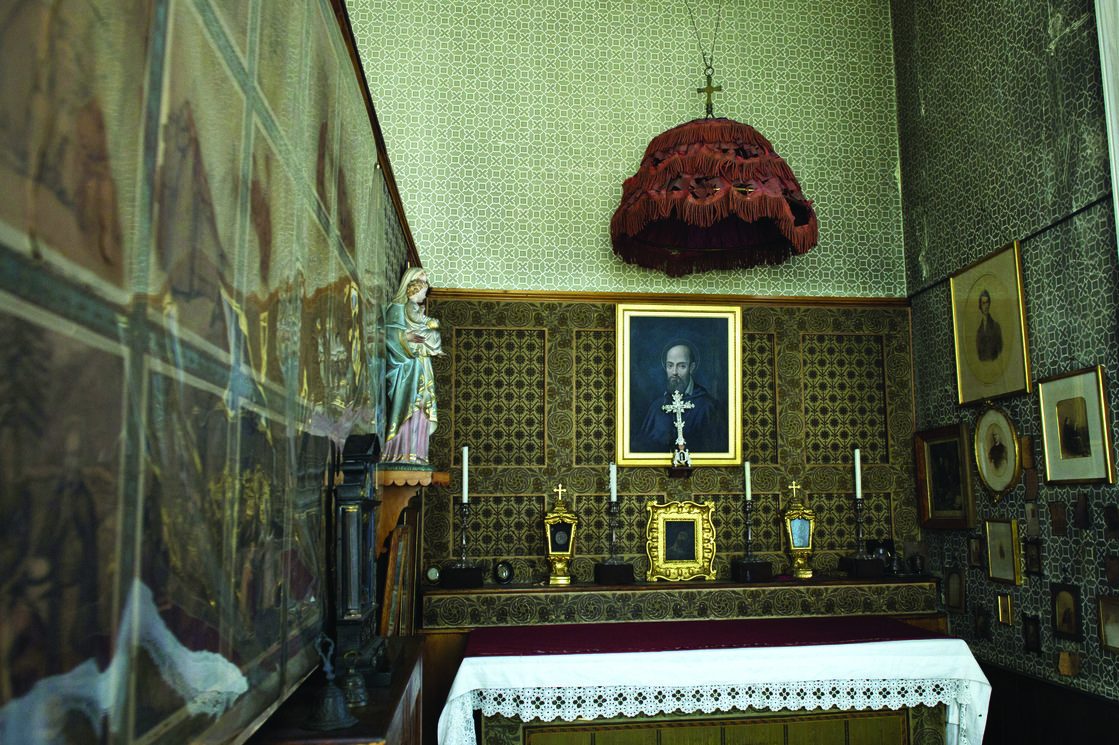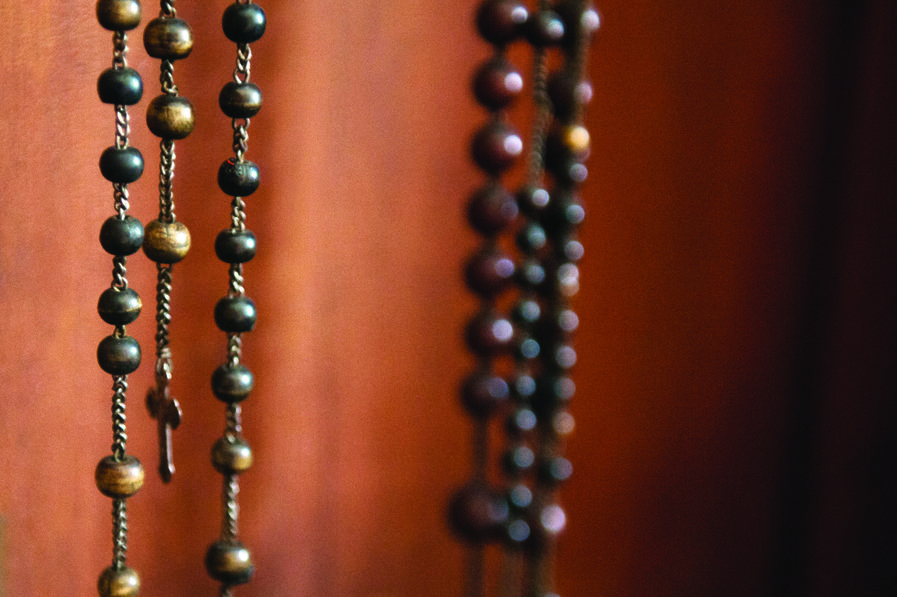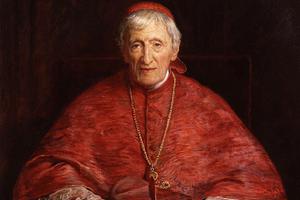Newman and the Mother of God: How the Soon-to-Be Saint Grew in His Love of Mary
It would be fair to say that the closer Newman drew to the Church, the closer he drew to the Mother of the Church.

In 1832, on the Solemnity of the Annunciation, Newman — serving then as vicar of St. Mary the Virgin — preached to the University of Oxford about the Mother of God. In that sermon he said: “Who can estimate the holiness and perfection of her, who was chosen to be the Mother of Christ? What must have been her gifts, who was chosen to be the only near earthly relative of the Son of God, the only one whom he was bound by nature to revere and look up to; the one appointed to train and educate him, to instruct him day by day, as he grew in wisdom and in stature?”
It was from then on that Mary was to train, educate and instruct the young Anglican clergyman as he too grew in wisdom and stature — and in devotion to her — in ways he could not then have foreseen.
First Steps to Mother
When Froude died in 1836, he left Newman his Roman Breviary. Newman began to recite it daily — but despite his newfound devotion to Mary, he did not include the prayers from the breviary invoking Our Lady’s aid. Newman still had an Anglican aversion to certain aspects of Catholic devotion to the Mother of God.
In 1841, professor C.W. Russell of the Catholic seminary at Maynooth, Ireland, wrote to Newman. Russell assured the Englishman that a more in-depth knowledge of Church teaching on the Blessed Virgin would help assuage any fears he had on the subject. Russell went so far as to suggest — rightly — that the Rosary was nothing less than “a series of meditations on the Incarnation, Passion and Glory of our Redeemer.” He also sent Newman a copy of St. Alphonsus Liguori’s homilies on Our Lady. Decades later, in Newman’s autobiographical Apologia Pro Vita Sua (1864), he wrote: “[Russell] had, perhaps, more to do with my conversion than anyone else.”
By the time Newman had decided to become a Catholic, his understanding of the role of Mary in the life of the Christian and of the redemption of mankind had been greatly clarified by his readings of the Church Fathers. Writing on the Third Ecumenical Council of Ephesus (431), when Mary was confirmed as Theotokos, or Mother of God, he noted that this had been necessary “in order to protect the doctrine of the Incarnation and to preserve the faith of Catholics from a specious humanitarianism,” before going on to point out that those Christian groups that had renounced any devotion to Our Lady “soon ceased to adore her Eternal Son.”
Through Mary to Christ
It would be fair to say that the closer Newman drew to the Church, the closer he drew to the Mother of the Church. Following his conversion, in 1849 Newman published his Discourses Addressed to Mixed Congregations. Again, he meditated on the role of Mary as a bulwark of faith in the life of a Christian and as the chief witness of the Incarnation.
“The Church and Satan agreed together in this, that Son and Mother went together; and the experience of [the last] three centuries has confirmed their testimony, for Catholics who have honored the Mother still worship the Son, while Protestants, who now have ceased to confess the Son, began then by scoffing at the Mother.”
In regard to the intercessory power of Our Lady, Newman, no doubt conscious of Protestant concerns on this matter, demonstrated the biblical nature of intercession with examples drawn from both Old (Abraham, Moses) and New Testament figures (Philip, Andrew).
As to Mary’s assumption, Newman came to understand that this doctrine had not only been believed from earliest times, but was fully coherent with the other truths of Revelation, in particular the doctrine of Mary’s divine maternity and the resurrection of the body.
“If the Creator comes on earth in the form of a servant and a creature,” Newman asks, “why may not His Mother, on the other hand, rise to be the Queen of Heaven, and be clothed with the sun, and have the moon under her feet?”
Newman was greatly influenced by the Church Fathers’ view of Mary as the Second Eve. Drawing upon the writings of St. Justin, St. Irenaeus and Tertullian, Newman explained that Eve had brought about the Fall of Man and that, as the “new Eve,” Mary crucially participated in our salvation. Just as Eve had cooperated with the devil in bringing about a great evil, Mary, too, had cooperated with grace to arrive at a much greater good. It was from this analysis that Newman was able to gain more of a glimpse into the great dignity of Our Lady.

The highest dignity of Mary, and perhaps her greatest title, is: Theotokos, Mother of God. As the use of Theotokos was formally affirmed at the Council of Ephesus, Newman wondered how Anglicans could not see what he now saw, namely, that the entire Catholic understanding of Mary is substantially that of the Church Fathers.
Newman’s Marian ‘Breviary’
In his final years, Newman’s eyesight grew worse. He was unable to pray his breviary. Instead, he substituted praying the Rosary. Even before that time, however, when not writing or reading, those around him noticed how frequently he carried the rosary in his hands.

With his increasing love of that Marian devotion, he wrote that Christ “came down from heaven and dwelt amongst us and died for us. All these things are in the Creed, which contains the chief things that he has revealed to us about himself. Now the great power of the Rosary lies in this, that it makes the Creed into a prayer; of course the Creed is in some sense a prayer and a great act of homage to God; but the Rosary gives us the great truths of his life and death to meditate upon and brings them nearer to our hearts.” He went on to add: “And so we contemplate all the great mysteries of his life and his birth in the manger; and so too the mysteries of his suffering and his glorified life. But even Christians, with all their knowledge of God, have usually more awe than love of him, and the special virtue of the Rosary lies in the special way in which it looks at these mysteries; for with all our thoughts of him are mingled thoughts of his Mother, and in the relations between Mother and Son we have set before us the Holy Family, the home in which God lived. Now the family is, even humanly considered, a sacred thing; how much more the family bound together by supernatural ties, and, above all, that in which God dwelt with his Blessed Mother.”
K.V. Turley writes
from London.
- Keywords:
- john henry newman
- k.v. turley
- marian devotion

















